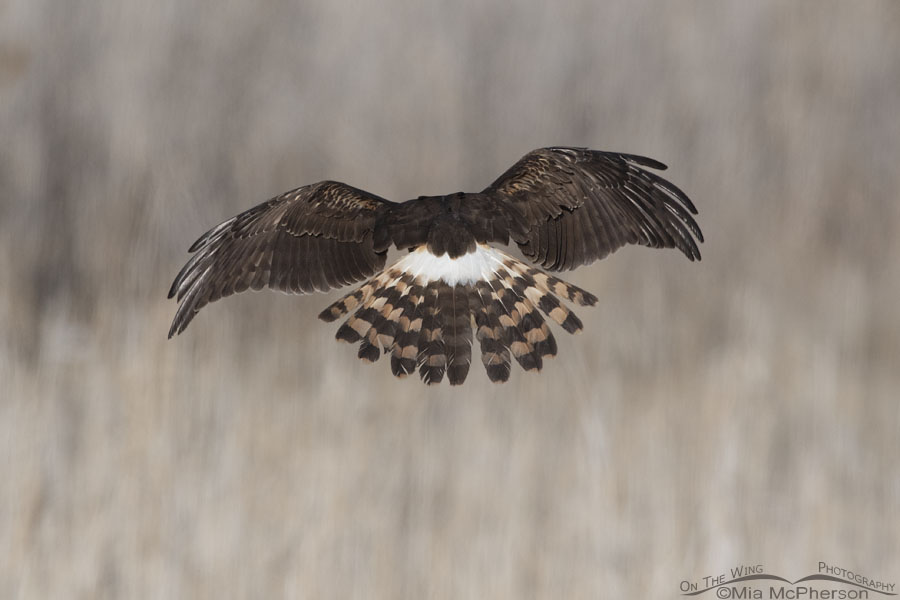 Back view of an immature female Northern Harrier – Nikon D500, f7.1, 1/4000, ISO 500, Nikkor 500mm VR with 1.4x TC, natural light, not baited
Back view of an immature female Northern Harrier – Nikon D500, f7.1, 1/4000, ISO 500, Nikkor 500mm VR with 1.4x TC, natural light, not baited
Would you be able to ID this hawk from just this image or similar view of it in the field if I hadn’t already identified it in my title and my photo caption? Without a view of the face some people might not be able to form an ID but just the tail of this raptor tells me all I need to know to give a positive ID.
Except for when they are flightless chicks in their nest the distinctive white upper tail coverts are always found on Northern Harriers which combined the length and shape of the tail plus the bands on it lead me directly to the ID of this species. A few other raptors can appear to have a “white rump” but they wouldn’t have the same pattern of bands on their tails.
I also know that for a while I’d be able to recognize this specific Northern Harrier in the field if I saw her again because one of her left primary wing tips (P8) which are also known as flight feathers has been broken off and is shorter than the two primary feathers adjacent to it. In addition one of her rectrices, (R1), or tail feathers is damaged, partially missing or growing in which has caused a gap in her tail feathers. Once this harrier replaces those feathers I wouldn’t be able to tell her apart from any other female Northern Harrier in the field but for now I could.
From other images I took of this harrier I could tell she is an immature female because of her darkish eyes and buffy colored body along with other ID keys.
Usually I don’t like to take butt shots of birds but in this case I am glad that I did because when I saw it on my monitor at home I liked how the harrier is shown hovering over the marsh, how her tail is spread and how it shows the uniqueness of this individual bird.
Life is good.
Mia
Click here to view more of my Northern Harrier photos plus facts and information about this species.


Love it…as a painter of wildlife, it is so darned difficukt to get rear views of birds…plenty of side views and front views, but back views, not so much… This is beautiful on its own ,anyway…
Of course I can ID it, that is the only shot I usually get! I am still laughing! But I do like the photos with the tail flair and outstretched wings. Was it hovering?
Yes and no! If you know their behavior and feather ID, e.g. tail, wing, back, etc., yes. Behavior only might give a good guess if that is all you could see. Unless the hawk took off I would say you didn’t wait long enough for it to hover back toward you so you could see the rest of it.
Nice shot of the tail and its barring.
Unusual view, great to see!